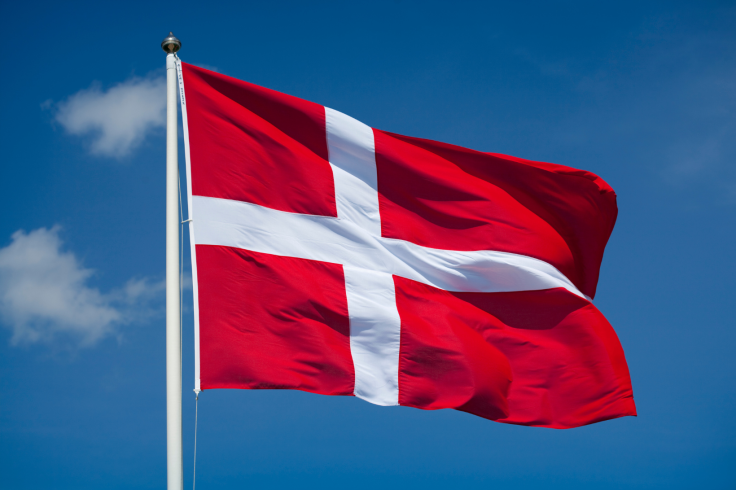Why Is the Danish Economy Growing So Strongly, and What Can the UK Learn From It?
Despite sky-high taxes, Denmark's growth model is thriving — offering key lessons for a struggling UK

Denmark has the highest tax burden in the OECD, with income taxes up to 56% and a 25% consumption tax, but it still has a robust GDP growth rate. Meanwhile, the United Kingdom struggles with stagnant growth, productivity challenges, and widening inequality in the country. Denmark's success stems from industrial specialisation, social trust, and strategic investment, all of which offer actionable lessons for British policymakers to revitalise the UK's economy.
Danish Growth Key Drivers
Despite the EUR's dominant position lately against the dollar, the EUR/DKK currency pair moves very slowly upwards. These favourable DKK to EUR rates are mainly caused by very low inflation in Denmark, which is 1.6% in 2025 and is projected to be 1.5% in 2026, indicating the robustness of Danish fiscal policies. Key drivers of Danish GDP are export-led industries, self-sufficiency of its energy sector, export diversification, and more. From other key drivers, the Danish economy is supported by strong macroeconomics and a high-trust social contract.
Focus on export
Denmark's growth is supported by globally competitive exports, like Novo Nordisk, which is a maker of drugs like Ozempic and Wegovy, both of which are bestsellers. Pharmaceuticals are a crucial constituent of Denmark's GDP. Denmark is a net gas exporter due to the reopening of the Tyra gas field in the North Sea. Export diversification is also a strong side of the country. Beyond pharma, Denmark manufactures wind turbines, industrial machinery, and high-quality agricultural exports like dairy, pork, and so on.
High-trust social environment
Unlike the UK's contentious tax debates, most Danes willingly pay high taxes because they view them as an investment in universally accessible services. Free healthcare, education, childcare, and many unemployment benefits reduce personal financial risks, which boosts entrepreneurial risk-taking. Unemployment benefits are numerous, and rules for hiring and firing are very flexible, allowing rapid reallocation of labour, which maintains social stability in the long run. The amount of total annual work hours is different between Denmark and the UK, where Danes have a better work-life balance.
Macroeconomics
Denmark typically maintains budget surpluses and low public debt, which creates a fiscal shield against crises. As a result, Denmark outperformed the UK in inflation statistics. Danish households also save around 10% of disposable income, with bank deposits reaching 1.2 billion DKK, a 40$ of GDP, which is a staggering number. The macroeconomics of Denmark is also strengthened by strategic state investments. The country channels tax revenues into high-return infrastructure like renewable energy, digitalised public services, and cycling networks.
The Contrast - UK Challenges and Lessons
The UK lags significantly in the GDP per capita with $43k versus Denmark's $61k. Productivity growth is also slower. Since 2008, the UK's real wages have been mostly stagnant, whereas Denmark has shown growth.
Structural weaknesses
UK public investment is lower when compared to Denmark. The NHS' digital lag reduces service efficiency despite similar spending levels. The housing crisis is also a factor, as UK house-price-to-income ratios are 50% higher than Denmark's, driving higher homelessness rates. Planning constraints limit supply while Denmark's social housing focus reduces homelessness. Apart from housing challenges, the inequality trap is also apparent in the United Kingdom. The inequality is growing in the UK as a result of all the challenges it faces since Brexit. As a result, there are several key lessons UK policymakers can learn from Denmark's example.
Key Lessons for the UK
The reforms of the UK should be focused on long-term results. Framing taxes as investments in public goods, not as burdens, is crucial. Piloting outcome transparency budgets could show citizens how education and health savings directly benefit them. Overhaul of business taxes could also be a major contributor to improvements. Mirroring Denmark's corporate tax but coupling it with R&D credits would allow the UK to target green tech and biotech, which are both important sectors. The country could also replace its Universal Credit with a Danish-style wage insurance coupled with mandatory skills assessments. Establishing a UK Future Fund modelled on Denmark's foreign assets to finance infrastructure would also boost the UK's competitiveness.
© Copyright IBTimes 2025. All rights reserved.




















